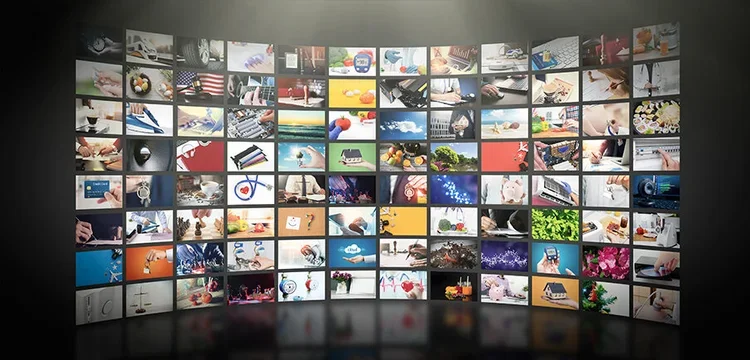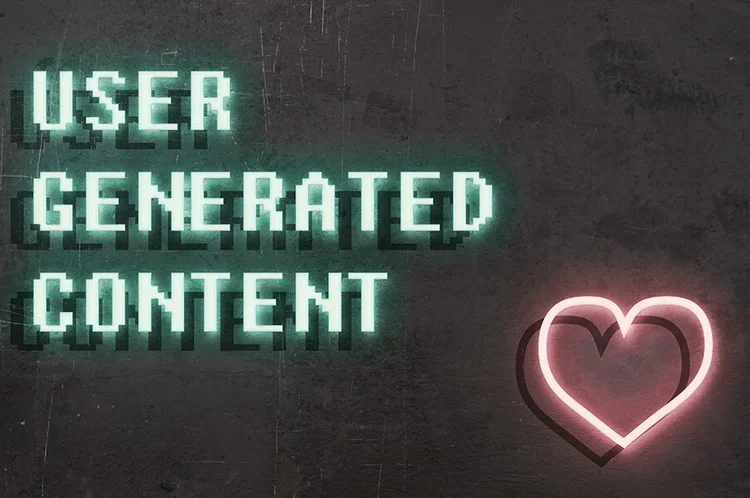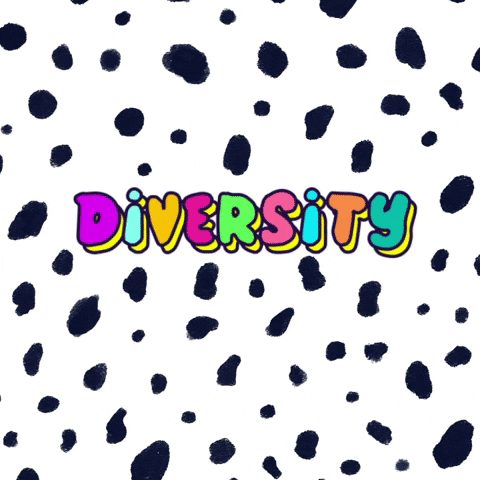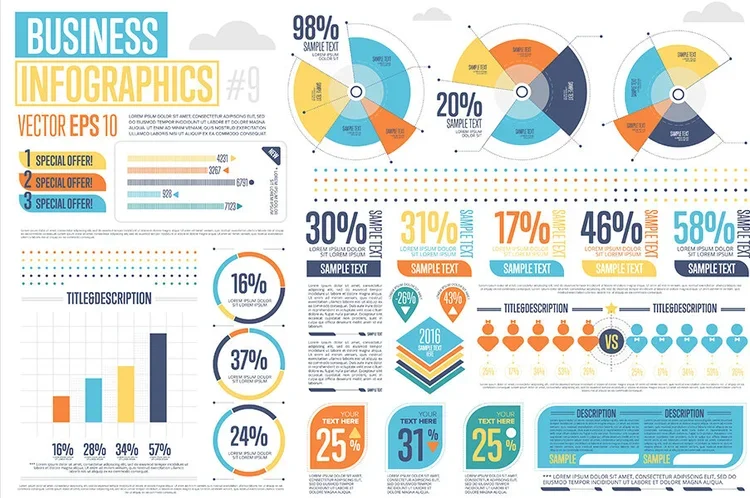9 Social Media Content Types Your Brand Should Be Using Today
With over half of the world currently on board and an estimated 4.41 billion users worldwide by 2025, social media is THE marketing platform for businesses around the world.
Because of that simple fact, so many brands are crowding the social media scene right now, making it a challenge to know how to stand out and engage with your audience.
That’s where social media content creation comes in.
Why is content creation such a big deal?
Because you’re competing for share of mind.
When you create great content, you create a reason for people to want to engage with your brand.
And of course, the more frequently your audience engages with your brand, the further down your sales funnel they fall.
Every piece of content that you create and share helps to tell your brand’s story.
With so many social media platforms out there, each specializing in different types of content, the real trick is knowing which social media content works best for your brand and how to get started.
9 social media content types your brand should be using today
Here are 9 types of social media content you should be using that will get your followers looking for more:
1. Images
We are visual creatures by nature.
Highway billboards have transitioned to mobile billboards - no matter how you look at it, visual content is one of the most important forms of advertising.
Pros: On social media, our hands are programmed to keep scrolling. You can tell your story faster with an image than with words. Plus, with so many free platforms available, you can easily edit pictures to get your message across.
Cons: It seems like everyone’s a photographer these days, which means more competition. To get noticed, you need your pictures to grab attention instantly.
Best Platform for Images: Images work well on almost all social media platforms. We would recommend picture posts for Instagram, Pinterest, Facebook and even Twitter.
Pro-Tip: Use high-quality images from free stock image websites. We’ve done the work for you by listing some of our favorite websites for the perfect visual content.
Bonus Tip: Consider professional photoshoots where financing permits.
Who’s doing Images right: For inspiration on images, check out Drink Oli Pop.
2. Text posts
Copy will always be a critical component of any marketing effort. After all, humanizing a brand isn’t just visual.
Pros: Sometimes a text post can cut through all the visual noise and forge a stronger connection.
Cons: Your readers probably skim and scroll through big blocks of text. It’s challenging to establish a brand identity with just text.
Best Platform for Text: Twitter. Twitter has made text posts so much easier to digest with its 140-word character limit. Other than Twitter, blog posts also work best for text. You can improve searchability for your website using blogs by targeting specific keywords.
Pro-Tip: Don’t bore your reader. Keep your text short.
Who’s doing Text Posts Right: We are hooked on Taco Bell’s Twitter account.
3. Videos
Video content reigns supreme because it is the most engaging, but not everyone is on board just yet…so when done correctly, video gets you noticed in the cluttered social media landscape.
Pros: Social media platforms love videos for one very specific reason—users spend more time consuming videos than any other form of content. To promote more video uploads, they’ve skewed their algorithms to give more exposure to videos. Translation: If you’re using videos on your social media, your organic reach gets a big-time boost.
Cons: Videos might look easy, but even the basic ones require some critical video editing skills.
Best Platform for Videos: YouTube is a platform made for videos. Other social media platforms where video does well are Instagram, TikTok and SnapChat.
Pro-Tip: Install video editing apps on your phone for editing on the go.
Who’s doing videos right: Tasty. Their videos go viral in the first 30 minutes!
4. Video stories
Video stories are videos you upload on your social media story section. While they are limited in length, you can upload multiple stories if your message is longer than the limit.
Pros: Video stories enjoy a high-profile space on social media. They are right at the top of the feed, making them hard to miss.
Cons: They have a short life span. They disappear after 24 hours.
Best Platform for Video Stories: If you’re putting up video stories, do it on Instagram, Snapchat and Facebook
Pro-Tip: Utilize the FOMO (fear of missing out) vibe to release new updates, offers, and other time-sensitive information.
Who’s doing video stories right: Lowe’s Home Improvement. Their DIY home improvement hacks promote their product while giving their viewers content they love.
5. Live videos
Live videos have changed the entire social media scene by allowing brands to share real-time updates and experiences for their followers.
Pros: With the current scenario, live events open great possibilities to increase your attendee count without it affecting security and safety protocols, and they are one of the truest forms of organic content.
Cons: Unstable or poor internet connection would seriously affect your audience reach. You also need to be very sensitive to what and how you say it. There are no ‘take-backs’ with live content.
Best Platform for Live Videos: Instagram, Snapchat, Facebook and YouTube offer users the possibility of going live, and their algorithms give you a good boost after a live session.
Pro-Tip: Announce your live session beforehand so your audience can plan accordingly.
Who’s doing Live videos right: For inspiration, on live videos check out Lilly Sabri. Her live fitness videos on YouTube get her millions of views.
6. User-generated content
User-Generated Content (UGC) is gold for your business. It’s your customers creating content for you and putting it up on their social media for their world to see.
Pros: UGC builds trust amongst your followers. When they see a satisfied customer creating posts for you, it’s the best kind of social proof that your brand can receive.
Cons: UGC might not be easy to generate, especially if you’re a new business. Without a strategy, you can go months without getting your customers to share organic content regarding your business.
Best Platforms for UGC: Any social media platform is great for UGC.
Pro-Tip: Create incentives for your customers to create content for you.
Who’s doing UGC right: We love how GoPro has used UGC in its social media strategy to create a buzz around its products.
7. GIFs and memes
The funny thing about GIFs and memes is that you can’t scroll through a GIF or a meme without reading it.
While this puts more responsibility on you to create great content, when you do, you will capture the audience’s attention for a longer period of time.
Pros: Humor is a sure-fire way to connect with your audience.
Cons: GIFs aren’t easy to plan. Humor is actually the most difficult kind of content to create because you must be certain to stay on-brand without offending any audience members.
Best Platform for GIFs and Memes: Instagram, Facebook and Twitter are your best bets.
Pro Tip: Create your own GIFs and memes on Giphy’s GIF maker.
Who’s doing GIFs and memes right: Brisbane Broncos are having fun on Twitter with their GIFs.
8. Audio posts
Many users consume social media content on the go, and audio posts cater to this audience. Podcasts, audiobooks, and social audio clubs are gaining traction today.
Pros: Many brands still haven’t figured out why audio is gaining in popularity and how to best position themselves. You could have the advantage of getting in early here if you learn how to do it right.
Cons: Not everyone listens to podcasts so if your target audience isn’t audio inclined, you won’t get the expected results.
Best Platforms of Audio Posts: Podcasts are the primary content type for audio posts today; however, the social platform Clubhouse has disrupted the audio landscape by presenting an opportunity to take audio live. It’s been so successful that Instagram and other social platforms are actively looking to solve for this.
Pro Tip: Start learning by listening to your competitors to see what they are talking about and take inspiration.
Who’s doing audio posts right: When Sephora launched its’ lipstick line, they released a podcast #Lipstories where women shared their self-image stories.
9. Infographics
In isolation, facts and figures are boring. Infographics have changed all that by bringing facts and figures to life in an engaging, fun and visual manner.
Pros: Some of the most painfully detailed content is easily digested with infographics.
Cons: They take a lot of time to create.
Best Platform for Infographics: Twitter and Pinterest are places you want to put up your infographics.
Pro-Tip: Stick to figures that really matter. Don’t jam them all together in one graphic.
Who’s doing infographics right: Here’s one we love from LinkedIn Marketing.
Get started today
Need help identifying the best type(s) of social media content for your brand, putting together a strategy or figuring out where on earth to get started today?
Let’s do it the fun way - together.
Fill out our form to get started.








